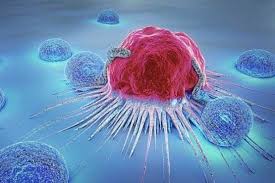Progressive magnification of Liquid nanosensors in p-scanning SiNWs (based on PhD in nano-microelectronics)
Researcher and author: Dr. ( Afshin Rashid)
Note: Progressive magnification of liquid nanosensors Liquid nanosensors , in which p- scanned SiNWs establish a common source (middle electrode) with the surrounding discharge electrodes. Nano-electrochemically different sub-regions are created by the simultaneous flow of different silane derivatives on their designated pads, using a special eight-channel liquid device.
Design Nano Sensors Liquid Liquid nanosensors with eight sub-regions of the chemical. The electronic properties of carbon nanotubes are highly sensitive to the chemical environment around the nanotubes. This sensitivity is a suitable tool for the use of nanotubes in the field of Liquid nanosensors . The fabrication of Liquid nanosensors in n- electron-basedp-based nano-electron-basedSiNWs hasalso undergone a major transformation in medical and biological research, and the technology for making biosensors and the knowledge of nanometer production of these devices has expanded day by day. These sensors useLiquid nanosensors in SiNWs with p-scanning channelsdue to the use of nano-active fluids in their structure. They are called and are divided into two categories: nano-electrochemical and nano-biological.
In the manufacture of Liquid nanosensors, in SiNWs channels with p-scanning and amplification of medical and biological electrical nanosensors, depending on whether we want to use this sensor to decompose intracellular species, intercellular biological fluid or in the blood, The dimensions of the sensor tip, the tapered angle of the tip and the softness of the coating on the fiber will vary. To provide this fiber as a sensor tip, we can use devices used to stretch Liquid nanosensors in p-scan SiNWs channels . These types of sensors, in terms of their nanometer size and their application in liquid media, Liquid nanosensors, in SiNWs channels with p-scanning Were named. Nano-sensors are very small electrodes in nanometer size and cellular dimensions that are sensitive to the detection of chemical or biological species in cells by fixing certain enzymes on their surface . The nano-sensors Liquid Liquid nanosensors, SiNWs channels with p- scan for the detection and quantification of species used in biological systems. This technique is a very useful way to detect the passage of certain molecules through a cell wall or membrane.
Conclusion :
Progressive magnification Liquid nanosensors , in which p- scanned SiNW channels establish a common source (middle electrode) with the surrounding discharge electrodes. Nano-electrochemically different sub-regions are created by the simultaneous flow of different silane derivatives on their designated pads, using a special eight-channel liquid device.
Author: Dr. ( Afshin Rashid)




